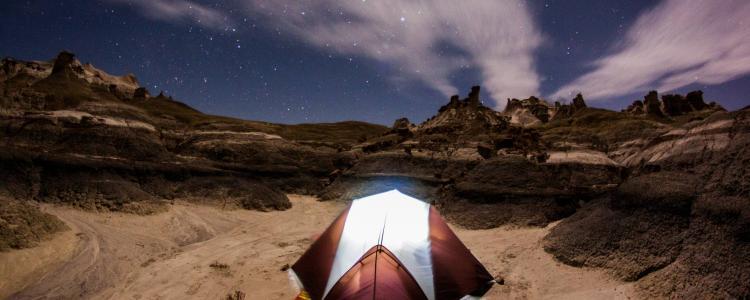The desert is a stark, desolate and deadly place for those brave enough to travel there. The lack of water and difficult terrain are bad enough before you even factor in the deadliness of any creature tough enough to live there. Deserts are hot places with a global average daytime temperature of a staggering 38C but what often shocks those unfamiliar with these sandy landscapes is the average nighttime temperature of a deeply frigid -3.9C. With peaks that can exceed 50C and troughs that can dive lower than your household freezer at -18C, how can you properly prepare for such conditions?
Hypothermia in the Desert
Whilst hyperthermia (or heat-stroke as it is more commonly known) is a well-known issue that many people travelling to the desert prepare for, the related disorder of hypothermia is normally only thought of when people go trekking in cold and wet mountains or Arctic conditions. Despite this perception, the National Centre for Biotechnological Information has published research that concludes that hypothermia is a significant and deadly issue in desert climates. Those familiar with trekking through the Brecon Beacons will be very familiar with the signs and causes of this already. Cooling from poor insulation or evaporation (such as wet clothes drying on your skin) can inhibit your body’s ability to regulate its temperature causing it to drop rapidly. This in turn slows down the chemical reactions that keep you alive until you plunge into a coma that could lead to death.
Loosing Heat Through Sweat
Extreme cold is bad enough but the hot days that precede the nightly freeze make deserts all the more deadly. The heat causes your body to react in certain ways to prevent hyperthermia/heat-stroke and amongst this arsenal of responses your body has is sweat. If you’ve ever been on the aforementioned hike through the Welsh mountains you’ll be very familiar with the idea that being wet equates to being cold. Whilst this cooling is useful during the blazing hot desert day it won’t stop at night. Whilst your surroundings may only be -5C you are 37C inside which is more than enough to cause your remaining sweat to evaporate causing cooling. Just look at the desert sand; it retains its heat for only a short while after sun set, with no cloud cover the heat of the day vanishes quickly.
Solutions for Desert Nights
One obvious solution is to adopt the lifestyle of the Bedu; choose to travel at night and find shade during the day. This doesn’t suit everyone and isn’t always possible so it is best to be prepared for setting up camp for nighttime. If you can get to rocks at night you will find that they retain their heat far longer than the sand. Pitching camp next to a rocky outcrop may help you maintain a warmer camp through the night.
Beyond this it is important to understand how heat is lost by your body and how to prevent it. Dry off sweat and change clothing during the twilight hours to avoid evaporation during the night. Layer up (in multiple thin layers rather than thick ones) and use a tent to avoid loss of heat from convection. Loss of heat from conduction is the easiest to block through a simple insulated roll mat. As well as using a sleeping bag, try packing an extra sleeping bag liner to create some more layers you, or a foil survival blanket can stop you losing heat through radiation.
Be Mindful of Desert Cold when Preparing for Treks
Any experienced trekker knows how to prevent hypothermia in cold, wet conditions, but in order to prepare for Desert treks it is important to be aware that cold nights will be a real risk to you must be ready for. Those who visit the beauty of the desert should always expect the oven they experience during the day to become a freezer at night. Think ahead, properly prepare and you can stay safe and make the most of your visit to this incredible landscape.


No Comments
Be the first to start a conversation